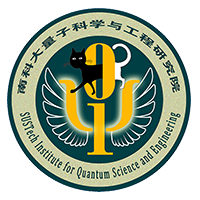Progress in experimental study of quantum pseudorandomness with a 12-qubit system by SUSTech researchers
Recently, Jun Li (Associate Researcher) and Tao Xin (Assistant Researcher) from SIQSE, and Dawei Lu (Associate Professor) from Department of Physics, worked with Professor Bei Zeng and Raymond Laflamme from University of Waterloo. They have succeeded in experimental realization of a 12-qubit quantum pseudorandomness generator based on a 12-spin NMR system. The research was published by the known journal Physics Review Letters, in a paper entitled “Experimental Implementation of Efficient Quantum Pseudorandomness on a 12-Spin System”.
Quantum randomness is a fundamental concept as well as a useful tool in many fields of modern quantum science and technology. In non-equilibrium statistical mechanics, random quantum processes play key roles in understanding many-body quantum systems out of equilibrium, as they capture universal properties of system dynamics and model the approach to thermalization. In quantum computing, random transformations are crucial for demonstrating quantum advantages. In recent years, quantum randomness has found applications in quantum tomography, fidelity estimation, Renyi entropy measurement, and noise characterization. Therefore, how to generate quantum random states/operations efficiently is attracting ever growing interest.
In principle, similarly to the classical case, the complexity of generating fully random transformations on a quantum system grows exponentially with the system size. Therefore, quantum pseudorandomness was proposed as an alternate. Quantum pseudorandomness is not true randomness, but can mimic the behaviour of randomness to a certain extent. As a matter of fact, in practice one can only generate pseudorandomness through a deterministic algorithmic procedure. Great efforts were devoted to efficient constructions of quantum pseudorandomness or explorations of their practical uses. Unfortunately, experimental progress is very limited, they have been achieved only in small-sized physical systems.
In this work, the authors are concerned with how to make a quantum pseudorandomness generator on a relatively large quantum system. Concretely, the experimental system being chosen is a 12-qubit NMR sample. The sample contains 7 labelled carbon nuclei and 5 proton nuclei. The experimental scheme is as follows, the following form of random Hamiltonian is constructed

here, the
coefficients ![]() are effective random couplings,
which can be realized via random refocusing 180 pulse sequences. The whole
evolution sequence is shown in the figure. Theory and numerical simulations
both suggest that, after about two rounds of evolution, one can generate
sufficiently random quantum operations over the entire state space.
are effective random couplings,
which can be realized via random refocusing 180 pulse sequences. The whole
evolution sequence is shown in the figure. Theory and numerical simulations
both suggest that, after about two rounds of evolution, one can generate
sufficiently random quantum operations over the entire state space.

Figure. (a) 12-qubit molecular structure. (b) Quantum pseudorandomness generator based on the random Hamiltonian evolution approach. Every curve corresponds to a evolutionary trajectory under a randomly generated Hamiltonian. These evolutionary trajectories starts from the identity, and at the long time limit, the operations that they arrive at are sufficiently uniformly distributed in the unitary group. (c) Experimental sequence. H is the Hadamard gate. The rectangles represent 180 degree pulses applied at random time.
In this work, because the system has a large size, the density matrix is of dimension 4096×4096, this makes the experiment extremely difficult as there will be a huge computational cost. For the experiment, the researchers employed various NMR techniques. For example, to realize the random couplings, random refocusing technique is used. And to increase experimental accuracy, selective pulse network compilation as well as subsystem-based GRAPE are used. Besides, in order to detect the pseudorandomness generated in the experiment, multiple-quantum coherence technique from solid-NMR has also been used. Because of the wide applicability of quantum pseudorandomness, it is anticipated that the techniques developed and demonstrated here will find broader applications in future quantum tasks.
Jun Li is the first author and communication author of the paper. Tao Xin is a co-author. Dawei Lu and Bei Zeng are co-communication authors. The work was supported by the National Natural Science Foundation of China, the Guangdong Innovative and Entrepreneurial Research Team Program, and the Science, Technology and Innovation Commission of Shenzhen Municipality.
Article link: https://journals.aps.org/prl/abstract/10.1103/PhysRevLett.123.030502



